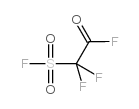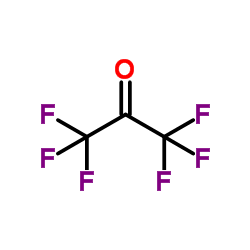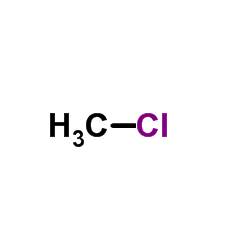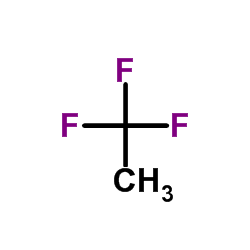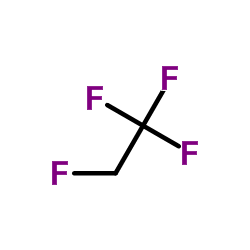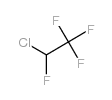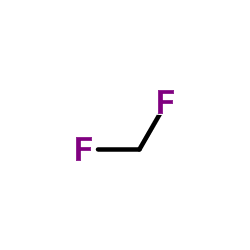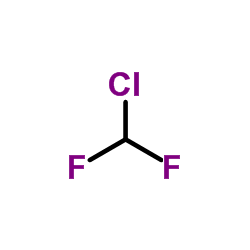CHEMICAL IDENTIFICATION
-
RTECS NUMBER :
-
KI1101000
-
CHEMICAL NAME :
-
Ethane, 1,2-dichloro-1,1,2,2-tetrafluoro-
-
CAS REGISTRY NUMBER :
-
76-14-2
-
BEILSTEIN REFERENCE NO. :
-
1740333
-
LAST UPDATED :
-
199712
-
DATA ITEMS CITED :
-
35
-
MOLECULAR FORMULA :
-
C2-Cl2-F4
-
MOLECULAR WEIGHT :
-
170.92
-
WISWESSER LINE NOTATION :
-
GXFFXGFF
HEALTH HAZARD DATA
ACUTE TOXICITY DATA
-
TYPE OF TEST :
-
LD - Lethal dose
-
ROUTE OF EXPOSURE :
-
Oral
-
SPECIES OBSERVED :
-
Rodent - rat
-
DOSE/DURATION :
-
>2250 mg/kg
-
TOXIC EFFECTS :
-
Details of toxic effects not reported other than lethal dose value
-
REFERENCE :
-
NTIS** National Technical Information Service. (Springfield, VA 22161) Formerly U.S. Clearinghouse for Scientific & Technical Information. Volume(issue)/page/year: OTS0520424
-
TYPE OF TEST :
-
LC50 - Lethal concentration, 50 percent kill
-
ROUTE OF EXPOSURE :
-
Inhalation
-
SPECIES OBSERVED :
-
Rodent - rat
-
DOSE/DURATION :
-
72 pph/30M
-
TOXIC EFFECTS :
-
Details of toxic effects not reported other than lethal dose value
-
REFERENCE :
-
EJTXAZ European Journal of Toxicology and Environmental Hygiene. (Paris, France) V.7-9, 1974-76. For publisher information, see TOERD9. Volume(issue)/page/year: 9,385,1976
-
TYPE OF TEST :
-
LC50 - Lethal concentration, 50 percent kill
-
ROUTE OF EXPOSURE :
-
Inhalation
-
SPECIES OBSERVED :
-
Rodent - mouse
-
DOSE/DURATION :
-
70 pph/30M
-
TOXIC EFFECTS :
-
Details of toxic effects not reported other than lethal dose value
-
REFERENCE :
-
EJTXAZ European Journal of Toxicology and Environmental Hygiene. (Paris, France) V.7-9, 1974-76. For publisher information, see TOERD9. Volume(issue)/page/year: 9,385,1976
-
TYPE OF TEST :
-
LC50 - Lethal concentration, 50 percent kill
-
ROUTE OF EXPOSURE :
-
Inhalation
-
SPECIES OBSERVED :
-
Rodent - rabbit
-
DOSE/DURATION :
-
75 pph/30M
-
TOXIC EFFECTS :
-
Details of toxic effects not reported other than lethal dose value
-
REFERENCE :
-
EJTXAZ European Journal of Toxicology and Environmental Hygiene. (Paris, France) V.7-9, 1974-76. For publisher information, see TOERD9. Volume(issue)/page/year: 9,385,1976
-
TYPE OF TEST :
-
LC - Lethal concentration
-
ROUTE OF EXPOSURE :
-
Inhalation
-
SPECIES OBSERVED :
-
Rodent - guinea pig
-
DOSE/DURATION :
-
>20 pph/8H
-
REFERENCE :
-
JOCMA7 Journal of Occupational Medicine. (Chicago, IL) V.1-9, 1957-67. For publisher information, see:JJOMDZ Volume(issue)/page/year: 4,262,1962 *** REVIEWS *** ACGIH TLV-Not classifiable as a human carcinogen DTLVS* The Threshold Limit Values (TLVs) and Biological Exposure Indices (BEIs) booklet issues by American Conference of Governmental Industrial Hygienists (ACGIH), Cincinnati, OH, 1996 Volume(issue)/page/year: TLV/BEI,1997 ACGIH TLV-TWA 6990 mg/m3 (1000 ppm) DTLVS* The Threshold Limit Values (TLVs) and Biological Exposure Indices (BEIs) booklet issues by American Conference of Governmental Industrial Hygienists (ACGIH), Cincinnati, OH, 1996 Volume(issue)/page/year: TLV/BEI,1997 *** U.S. STANDARDS AND REGULATIONS *** OSHA PEL (Gen Indu):8H TWA 1000 ppm (7000 mg/m3) CFRGBR Code of Federal Regulations. (U.S. Government Printing Office, Supt. of Documents, Washington, DC 20402) Volume(issue)/page/year: 29,1910.1000,1994 OSHA PEL (Construc):8H TWA 1000 ppm (7000 mg/m3) CFRGBR Code of Federal Regulations. (U.S. Government Printing Office, Supt. of Documents, Washington, DC 20402) Volume(issue)/page/year: 29,1926.55,1994 OSHA PEL (Shipyard):8H TWA 1000 ppm (7000 mg/m3) CFRGBR Code of Federal Regulations. (U.S. Government Printing Office, Supt. of Documents, Washington, DC 20402) Volume(issue)/page/year: 29,1915.1000,1993 OSHA PEL (Fed Cont):8H TWA 1000 ppm (7000 mg/m3) CFRGBR Code of Federal Regulations. (U.S. Government Printing Office, Supt. of Documents, Washington, DC 20402) Volume(issue)/page/year: 41,50-204.50,1994 *** OCCUPATIONAL EXPOSURE LIMITS *** OEL-AUSTRALIA:TWA 1000 ppm (7000 mg/m3) JAN 1993 OEL-AUSTRIA:TWA 1000 ppm (7000 mg/m3) JAN 1993 OEL-BELGIUM:TWA 1000 ppm (6990 mg/m3) JAN 1993 OEL-DENMARK:TWA 1000 ppm (7000 mg/m3) JAN 1993 OEL-FINLAND:TWA 1000 ppm (7000 mg/m3);STEL 1250 ppm (8750 mg/m3) JAN 1993 OEL-FRANCE:TWA 1000 ppm (7000 mg/m3) JAN 1993 OEL-GERMANY:TWA 1000 ppm (7000 mg/m3) JAN 1993 OEL-HUNGARY:TWA 100 mg/m3;STEL 200 mg/m3 JAN 1993 OEL-THE NETHERLANDS:TWA 1000 ppm (7000 mg/m3) JAN 1993 OEL-THE PHILIPPINES:TWA 1000 ppm (7000 mg/m3) JAN 1993 OEL-POLAND:TWA 5000 mg/m3 JAN 1993 OEL-RUSSIA:STEL 3000 mg/m3 JAN 1993 OEL-SWITZERLAND:TWA 1000 ppm (7000 mg/m3) JAN 1993 OEL-TURKEY:TWA 1000 ppm (7000 mg/m3) JAN 1993 OEL-UNITED KINGDOM:TWA 1000 ppm (7000 mg/m3);STEL 1250 ppm JAN 1993 OEL IN BULGARIA, COLOMBIA, JORDAN, KOREA check ACGIH TLV OEL IN NEW ZEALAND, SINGAPORE, VIETNAM check ACGIH TLV *** NIOSH STANDARDS DEVELOPMENT AND SURVEILLANCE DATA *** NIOSH RECOMMENDED EXPOSURE LEVEL (REL) : NIOSH REL TO DICHLOROTETRAFLUOROETHANE-air:10H TWA 1000 ppm REFERENCE : NIOSH* National Institute for Occupational Safety and Health, U.S. Dept. of Health, Education, and Welfare, Reports and Memoranda. Volume(issue)/page/year: DHHS #92-100,1992 NIOSH OCCUPATIONAL EXPOSURE SURVEY DATA : NOHS - National Occupational Hazard Survey (1974) NOHS Hazard Code - T1293 No. of Facilities: 38 (estimated) No. of Industries: 2 No. of Occupations: 2 No. of Employees: 38 (estimated) NOES - National Occupational Exposure Survey (1983) NOES Hazard Code - T1293 No. of Facilities: 1140 (estimated) No. of Industries: 10 No. of Occupations: 32 No. of Employees: 59867 (estimated) No. of Female Employees: 45860 (estimated)
|



